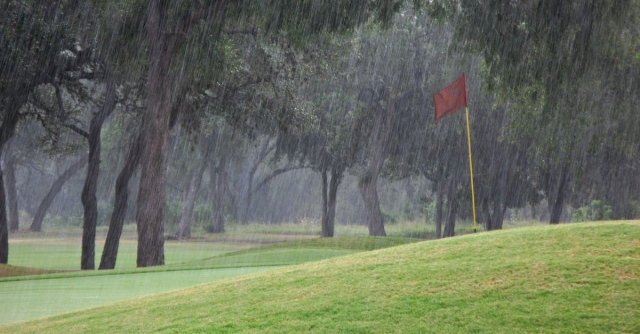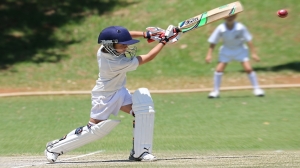Golf is a sport that requires a unique blend of skill, strategy, and precision. A golfer's performance is influenced by various factors, and one often underestimated yet significant factor is the weather. Weather conditions can have a profound impact on a golfer's game, affecting everything from shot accuracy to club selection. In this article, we delve into the intricate relationship between weather and golf performance, exploring how different weather elements can shape the outcome of a golf game.
1. Rain and Its Effects
Rain is another weather condition that can either disrupt or enhance a golfer's game, depending on the player's adaptability and strategy. Rainfall can affect the golf course's playing surface, making it softer and potentially slowing down the ball upon landing. This softening effect can be advantageous for certain shots, particularly approach shots that require the ball to stick on the green.
Challenges Posed by Rain
However, rain also brings challenges. The wetness can alter a golfer's grip on the club, potentially leading to less controlled swings and reduced accuracy. Additionally, waterlogged fairways and greens can cause the ball to skip or skid unexpectedly, making shot prediction difficult. Golfers must be prepared to adjust their swings and shot strategies to account for these uncertainties.
2. The Role of Wind
The wind is perhaps the most noticeable and immediate weather element that can alter a golfer's performance. It's not just about feeling a gentle breeze on the skin; wind can play tricks with the ball's trajectory, making even the simplest shots challenging. The direction and speed of the wind significantly impact a golfer's shot accuracy and distance.
Adjusting for Wind
Experienced golfers know that accounting for wind is crucial. A crosswind, for example, can cause a ball to veer off its intended path. Golfers must adjust their aim, club selection, and swing to compensate for these variables. When the wind is against the shot, a higher lofted club might be required to achieve the desired distance. Conversely, a tailwind might necessitate a lower lofted club to avoid overshooting the target.
3. Temperature and its Influence
Temperature, both the ambient air temperature and the temperature of the golf ball, can have subtle yet noteworthy effects on a golfer's performance. Cold weather, for instance, can cause the golf ball to lose some of its elasticity, leading to reduced distance in shots. Conversely, hotter temperatures can cause the ball to compress more, potentially increasing shot distance.
Player Comfort and Concentration
Moreover, player comfort plays a vital role in performance. Extremely cold or hot conditions can affect a golfer's focus and concentration, leading to suboptimal decision-making and execution. Staying properly hydrated and dressing appropriately for the weather can contribute to maintaining peak performance levels.
4. Fog's Influence on Golf
Fog is a weather condition that can significantly disrupt a golf game, primarily due to its impact on visibility. Playing in dense fog can make it nearly impossible for golfers to spot the target, hazards, or even other players on the course. This can lead to slower play and higher scores as players struggle to accurately gauge distances and choose the right clubs for different situations.
Adapting to Foggy Conditions
In foggy conditions, golfers need to rely more on their sense of feel and memory of the course. Familiarity with the course layout becomes essential, as players may need to rely on landmarks and mental maps to navigate the fog-shrouded fairways. Patience and adaptability are key virtues when dealing with fog.
5. The Impact of Sunlight
Sunlight, while not as immediately impactful as wind or rain, can affect a golfer's performance through visibility and glare. Glare from the sun can obscure a player's vision, making it challenging to accurately judge distances and spot potential hazards. Golfers often combat this issue by wearing sunglasses designed to reduce glare.
The Mental Aspect
Furthermore, sunlight and shadows can alter the perception of the golf course. The interplay of light and shadow can create illusions on the course, making it important for golfers to trust their instincts and yardage books when planning their shots.
Conclusion
Weather, often seen as an uncontrollable factor, has a profound impact on golf performance. From wind and rain to temperature, sunlight, and fog, each weather element presents its challenges and opportunities. Successful golfers understand the dynamics of these elements and adjust their strategies accordingly. Adapting club selection, shot trajectories, and even mental focus are crucial skills that can mean the difference between a triumphant game and a disappointing round. By acknowledging the significance of weather conditions and incorporating them into their game plans, golfers can elevate their performance and navigate the challenges posed by Mother Nature herself.






